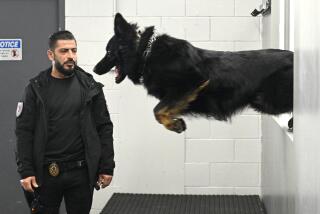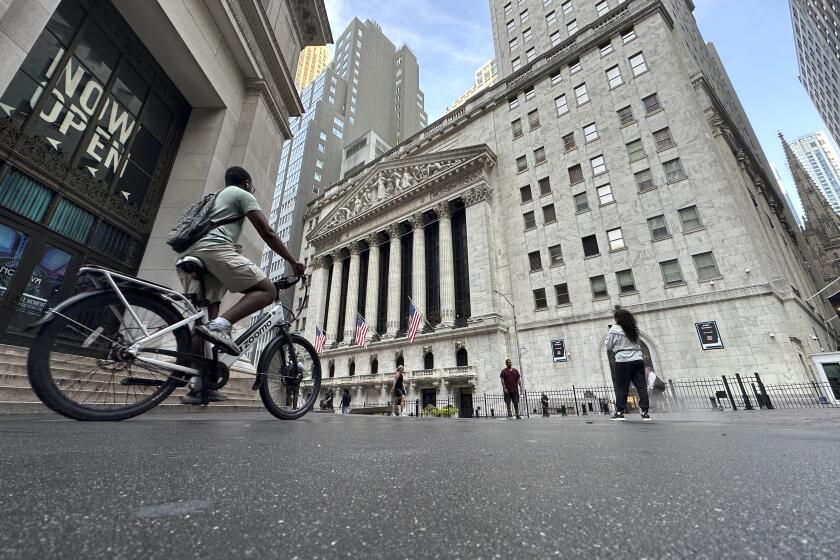Home Banking: So Far, More Wizard Than Oz
If debit cards represent a move toward checkless, paperless, on-the-go buying, something called home banking is the stay-at-home equivalent. By computer or phone, a consumer tells his bank which funds to transfer to which payee, and, thanks to high-tech electronics, it’s done, saving both consumer and bank considerable fuss. Such “remote banking,” says IBM electronic banking expert Jerome Svigals, also extends the principle of automated teller machines, which let you “bank on your own time.”
Though generally believed to be the next big revolution in banking, home banking is still a little program even at offering banks; only 17,000 of B of A’s 3.5 million customers bank at home. What’s more, at many banks, it’s only a little high-tech. But then, so are ATMs, which on the outside look impressively electronic and automatic and behind the facade are simply hoppers, emptied the next day by human tellers who go through all the envelopes.
As revolutions go, it’s promoted neither loudly nor widely. The 6,000 home banking customers at Security Pacific National Bank happened to find the brochure on a rack. Sears is preparing 300,000 fliers advertising “BillCall” (“pay all your bills by phone”), but only for a Los Angeles test market.
The service is not inexpensive at $3 to $8 per month (though at current volumes, banks at best break even). It’s also more effort to join than requesting an ATM card: The consumer has to provide a list of the merchants he’ll want paid, with names, addresses and account numbers. Some services have a set roster of merchants: B of A will add any merchant requested by more than 10 customers. Some, like Sears, will make any payments asked: “Your utility bills. Department stores. Your doctor or dentist. Your grandmother in South Dakota.”
Basic Communication Is All the Same
The basic communication in all home banking is the same: The consumer orders a specified payment to go to a given merchant on a chosen day, allowing up to five days for transfer. One can leave standing orders for regular payment of unvarying amounts, like monthly mortgages, and advance orders for payment while one’s on vacation.
The difference is in the way the consumer communicates, given the sophistication of his equipment. Someone working on a home computer can actually “access” his accounts to see the status of any past transactions and check all new commands. The person banking at home by push-button telephone works the buttons like an ATM machine, calling a given number, punching in his identification and account numbers, then the numbers assigned his various payees, the amounts to be paid and the date of the payment. Even people with rotary phones can play, giving oral instructions to recording machines or “teller” operators--no great advantage to financial institutions, which prefer automation but want to get as many people as possible used to remote banking.
The transmission of the payments to merchants can also vary in sophistication. If there are many, they often go in large groups on a special tape. But a lot still go as individual checks because they’re “onesies and twosies,” says John Cummins, a vice president at Sears’ Dean Witter Financial Services subsidiary, or because the merchant simply prefers checks. Small businesses are more comfortable with them, and large merchants may get so many checks, and so few taped payments as yet, that tapes are less convenient to handle.
Immediate Benefit
Some checks are even hand-written, making one banker comment that, in these early stages, “home banking can be truly electronic, and it can also be ordinary people doing ordinary things behind a screen, like the Wizard of Oz. It just transfers the bill-paying function from the consumer to the bank.” Home banking will be cost-efficient to banks only “in the automatic mode,” says Svigals, “when there’s no paper, pencils or eye shades,” not even tapes but automatic electronic transfers.
The consumer, however, benefits immediately, saving both time and expense. “It took an hour and a half before to prepare bills, write the checks and get them into the proper envelopes, with postage” says Joseph Marlin, a B of A computer banking customer in La Mesa, Calif. “Now we write very few checks, and I’ll keep all my ledgers--personal and business accounts--on the computer.”
Some worry about the payment getting there (after all, they have no receipt, no canceled check and monthly statements showing only date of payment), but most services guarantee delivery within five days or they’ll pay any late fees. Some have found another problem: Merchants usually get bill stubs with payment and, if they don’t, may fail to credit the account.
Nor is home banking for everyone yet. Actual homes “are only about 20% (of customers),” Svigals says. “The rest are professionals, and small-business people.” Computer banking draws a particularly “upscale” customer, electronically and financially hip. More than two-thirds of the B of A group also have VCRs, cable TV, home security systems, microwaves and video games; one-third use software for financial planning. Three-quarters of them also earned over $30,000, and at Madison National Bank in Washington, computer banking customers kept an average of $3,000 in checking accounts and $14,000 in money funds.
But computer home banking is the top of this incipient field. More pre -electronic than fully electronic banking, it still includes both rotary dialing and hand-written checks: Thus, one end of a transaction may be high-tech while the other is manual. It’s not quite the Emerald City, but it’s no longer Kansas, either.






